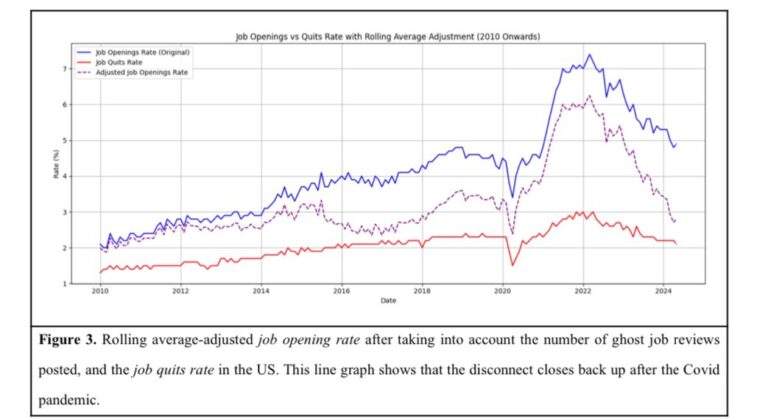How Many Bullet Points Per Job Should You Have on Your Resume?
Learn the ideal number of bullet points per job for your resume and how to make each one impactful. Discover tips on using tools, name-dropping, and showcasing results with the ‘Impact-First Framework’ to create a resume that stands out.
Key Takeaways
- Ideal Range: Aim for 3-6 bullet points per job to strike a balance between detail and readability.
- Show Impact: Use concrete examples that show your contribution without relying on vague or flowery language.
- Use the “Impact-First Framework”: Structure each point to maximize relevance and showcase specific outcomes. Use the fillable templates provided by the ImpactFirst ATS Resume Kit to help guide you.
- Be Specific: Mention notable clients, tools, and methodologies to make each bullet point impactful and unique.
Introduction
A well-crafted resume can set you apart in a competitive job market, but how do you ensure your bullet points work in your favor? The right number of bullet points per job and how you write them make all the difference. This guide will show you how to format your resume bullet points for maximum impact and readability while avoiding clichés and unnecessary fluff. It will also teach you how to use specifics, tools, and name drops effectively to boost credibility and relevance.
Crafting Effective Resume Bullet Points
- 1. Use 3-6 Bullet Points: Highlight key achievements without overwhelming the reader.
- 2. Lead with Impact: Begin each bullet with a result-focused phrase.
- 3. Integrate Tools/Technologies: Mention relevant tools (e.g., Excel, Salesforce, Python) to showcase expertise.
- 4. Be Specific: Include specific clients (e.g., “Managed projects for Fortune 500 clients”) and methodologies (e.g., “Agile, Scrum”).
- 5. Avoid Vague Language: Replace broad statements with detailed actions (e.g., “Enhanced workflow efficiency using JIRA”).
Pro Tip: Tailor your resume for each application by aligning bullet points with the job description.
💡 Remember: Show, don’t tell. Each bullet should illustrate your impact with specifics!
How Many Bullet Points Should You Have Per Job?
The ideal number of bullet points per job is 3 to 6. This range ensures you highlight essential achievements without cluttering the resume. For older or less relevant positions, 1–2 bullet points should suffice, while your most recent roles may benefit from the full 6.
Most Recent and Relevant Positions: 4 to 6 Bullet Points
Use 4 to 6 bullet points for recent and relevant roles to showcase your primary achievements. Keep the language direct and results-focused, showing impact instead of just stating duties. Be specific and include tools, methodologies, or notable clients when applicable.
Example Bullet Points:
- Led a cross-functional team using Agile methodologies and JIRA to streamline project workflows, delivering key software features 10 days ahead of schedule for a Fortune 500 client.
- Developed an internal reporting tool using Python and Power BI, reducing manual data processing time by 30 hours per month.
- Enhanced the training program for new hires by incorporating LMS platforms, enabling faster onboarding and reducing the training period by two weeks.
Tip: Be as specific as possible. Name-drop tools like Salesforce, Asana, or Tableau if relevant and use high-impact client names (e.g., “top-tier clients such as Google or Cisco”).
Older or Less Relevant Positions: 1 to 2 Bullet Points
Older or less relevant positions can be summarized with 1 to 2 bullet points. Highlight experiences that showcase transferable skills or notable contributions and don’t forget to mention tools or methodologies.
Example Bullet Points:
- Conducted quarterly supply audits using SAP, optimizing resource management and cutting overhead costs by $20K annually.
- Supported project logistics with MS Project, ensuring seamless coordination for multi-site events that met company KPIs.
Tip: Integrate software or methodologies that emphasize your proficiency and experience, even for past roles.
Entry-Level Positions: 2 to 3 Bullet Points
If you’re in an entry-level role, keep it focused with 2 to 3 bullet points. Highlight where you demonstrated initiative, learned quickly, or contributed to team success. Don’t hesitate to mention relevant tools or techniques you mastered.
Example Bullet Points:
- Managed social media calendars using Hootsuite, increasing brand engagement consistently across four platforms.
- Assisted with data entry and analysis using Excel and Google Sheets, maintaining data accuracy for a project involving over 1,000 client entries.
Tip: Highlight tools and skills that are relevant to the job you’re applying for to make your bullet points stand out.
The “Impact-First Framework” for Effective Bullet Points
To write impactful bullet points, use the Impact-First Framework, focusing on outcomes and concrete actions. This approach makes your bullet points concise, relevant, and results-oriented.
- Outcome: Start with a result-driven phrase like “Enhanced client satisfaction” or “Reduced onboarding time.”
- Job Description from the Ad: Use relevant language from job descriptions to align with the role.
- by: Explain how you achieved the outcome.
- Details: Add specifics like tools used, skills applied, or context.
Example: “Enhanced onboarding process by redesigning training materials using Canva and Loom, resulting in quicker adaptation for new team members.”
This approach lets you illustrate your contribution clearly and avoids vague, flowery language.
Examples by Industry with Name-Dropping and Tools
IT/Tech:
- Developed automated QA testing scripts using Selenium and Python, ensuring error-free releases for major projects at Microsoft.
- Migrated cloud services to AWS, maintaining 99.9% uptime and preventing disruptions during the migration.
Healthcare:
- Optimized patient intake processes using EPIC software,** leading to better throughput during peak clinic hours.
- Trained 20+ medical staff on updated HIPAA-compliant EHR systems like Cerner, ensuring data privacy adherence.
Sales:
- Closed deals with high-profile clients, including Tesla and Bank of America, using HubSpot CRM to track interactions and conversions.
- Designed a lead qualification funnel in Salesforce, helping prioritize high-value prospects and reducing sales cycle time.
Education:
- Implemented blended learning solutions using Google Classroom and Kahoot!, improving student engagement in online courses.
- Collaborated with faculty to create custom lesson plans in Adobe InDesign, boosting class participation rates.
Formatting Tips for Bullet Points
- Use Consistent Symbols: Stick to simple symbols like dots or dashes.
- Keep Line Spacing Clear: Add a space between bullet points for better readability.
- Align Indentation: Ensure each bullet is aligned uniformly for a professional look.
Tip: Maintain a uniform font style and size to keep your resume looking polished.
Avoiding Common Resume Mistakes
1. Using Passive Voice: Always use active language. “Managed client accounts” is better than “Client accounts were managed by me.”
2. Being Vague: Replace “Worked on team projects” with “Contributed to team projects by leading planning phases and ensuring timely execution using MS Teams.”
3. Overuse of Technical Jargon: Use relevant technical terms but ensure they’re understood in your field.
4. Too Long or Wordy: Bullet points should be concise. Aim for one to two lines per bullet.
Tailoring Your Bullet Points for Each Application
Customize your resume for each job application. Here’s how:
- Highlight Relevant Skills: Identify keywords in the job description and weave them into your bullet points.
- Match the Tone: If the job description is formal, keep your tone professional. For more creative fields, a less rigid tone might be acceptable.
- Focus on Top Requirements: Tailor the first bullet point under each job to reflect the most critical requirement of the target job.
Tip: Save multiple versions of your resume, each tailored for different types of roles you’re applying to.
Proofreading and Revision Tips
Before sending your resume, do the following:
- Read Aloud: This helps catch awkward phrasing.
- Check for Relevance: Make sure every bullet adds value.
- Ask for Feedback: Have a friend or mentor review it for clarity and impact.
Optimizing for Applicant Tracking Systems (ATS)
- Use Keywords Naturally: Incorporate relevant skills and job titles.
- Avoid Overstuffing: Don’t overload your resume with keywords in an unnatural way.
- Simple Formatting: Use standard fonts and avoid complex tables or graphics that might confuse ATS parsing.
Example for ATS: “Utilized CRM software to manage client follow-ups and maintain records aligned with ISO standards.”
Visual Example of a Resume Section
Here’s what an optimized resume section could look like:
Project Manager – TechCorp
- Led a 10-member team in launching a client-facing dashboard using Scrum methodology, achieving 70% client adoption within three months.
- Spearheaded cross-departmental workshops with Miro to align project goals, eliminating delays in project rollouts.
- Managed a portfolio of $2M projects annually with Trello, maintaining client satisfaction rates at 95%.
Resume Bullet Points: A Case-by-Case Approach
The number of bullet points on your resume should ultimately be guided by the nature of each job. Here’s a quick overview:
| Position Type | Recommended Bullet Points | Focus Areas |
|---|---|---|
| Most Recent and Relevant | 4 to 6 | Responsibilities, achievements, metrics |
| Older or Less Relevant | 1 to 2 | Key contributions, transferable skills |
| Entry-Level | 2 to 3 | Skills, achievements, potential for growth |
Frequently Asked Questions
1. Is more than six bullet points ever acceptable?
Only when each additional point provides a unique and valuable detail relevant to the job. Otherwise, prioritize and condense to maintain focus.
2. Do I need to quantify every bullet point?
Not always. Use quantification when it illustrates impact. Qualitative achievements can also showcase value when framed correctly.
3. Can I use phrases directly from job descriptions?
Yes. This helps align your resume with the role and improves ATS compatibility. Ensure you tailor these points with your experience.
4. Should I include technical details in my bullet points?
Include them when relevant, but avoid unnecessary jargon. The key is clarity for HR and technical interviewers.
5. Should I mention awards and recognitions?
Yes. Awards and recognitions demonstrate that your work has been acknowledged and add credibility.
Conclusion: Make Every Bullet Point Count
In resume writing, quality is key. By keeping bullet points to 3-6 per job, using the Impact-First Framework, and focusing on concrete examples with specific tools and methodologies, your resume will be compelling and tailored. Eliminate vague language, proofread for clarity, and optimize for ATS. Each bullet should show, not tell, your value, and demonstrate your proficiency through the thoughtful inclusion of tools, technologies, and notable clients.
Looking to take your resume to the next level? Make your bullet points impactful and ATS-optimized with the ImpactFirst ATS Resume Kit by Wealth Waggle. This comprehensive kit provides templates and guides to help you create a standout resume that passes ATS filters and impresses hiring managers.
Talk Resumes with Wealth Waggle
Perfect your resume with AI-assisted feedback and tips (using the latest recruiting intelligence).









